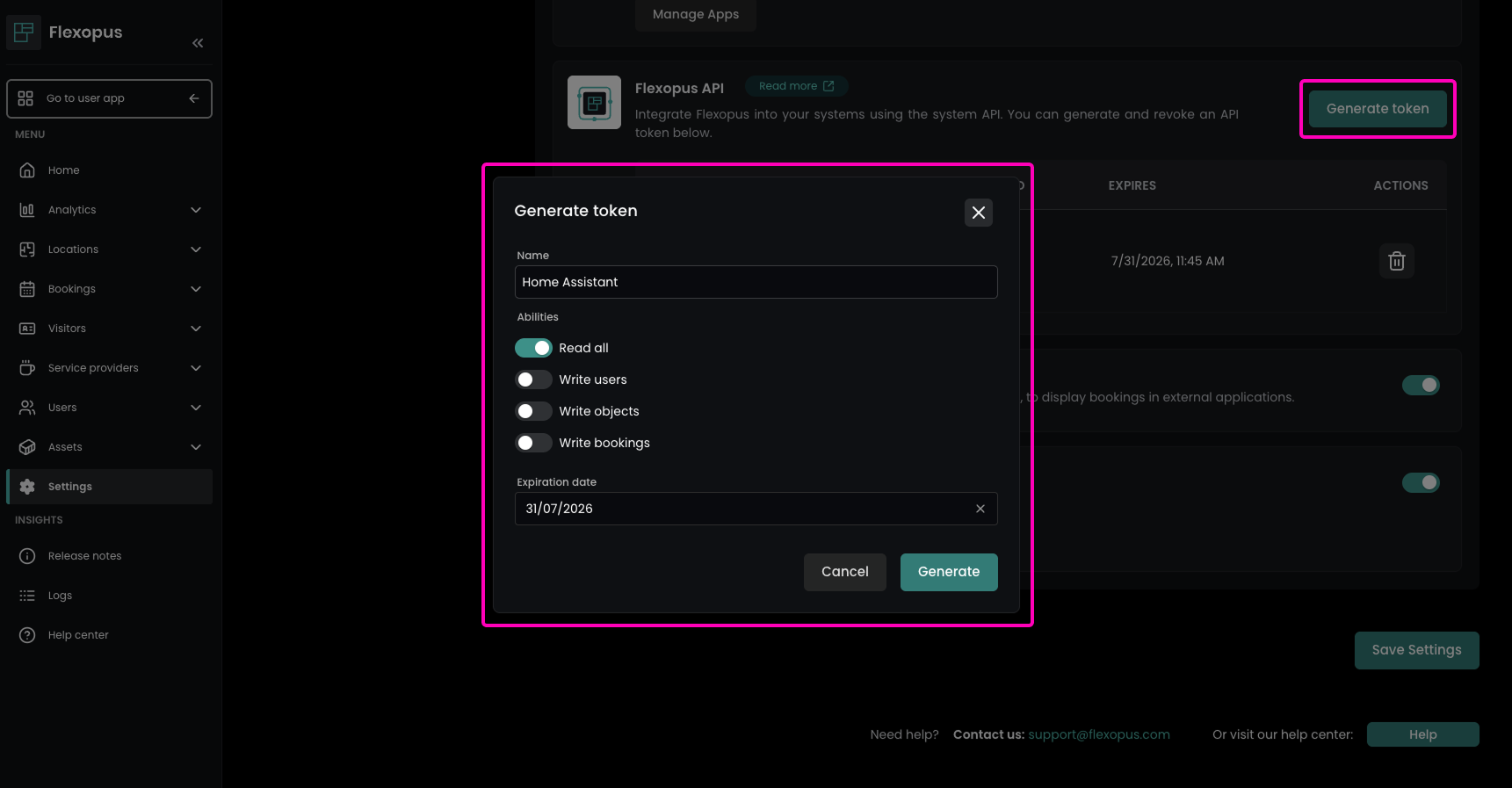2.37.0
General
Added Event Management Module (Beta)
This feature enables users to schedule and manage events more efficiently by allowing the selection of multiple meeting rooms, the addition of event descriptions, and the invitation of participants directly through Flexopus.
A new highlight is the availability timeline, which provides a visual overview of all meeting room availabilities — making it even easier to find the perfect space for your event.
Please be aware that recurring bookings, including both creation and editing, are not supported in the initial version.
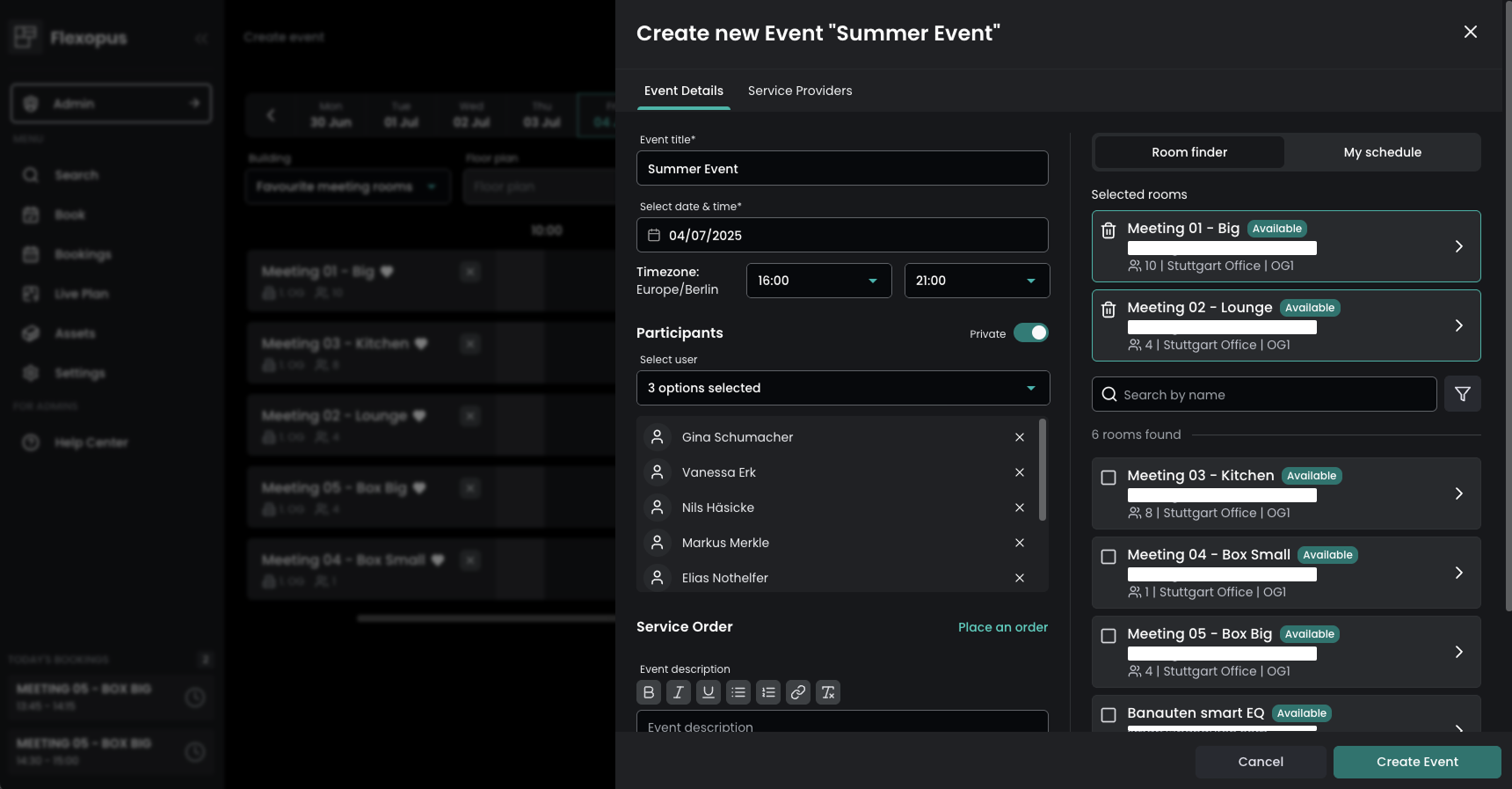
Added Visitor type, license plate attributes and more
Creating a new visitor is now more flexible and efficient. Users can assign a specific visitor type during the creation process (e.g., maintenance worker, customer, interviewee), helping to categorize visits more precisely.
In addition, a new optional field for visitor license plates is available and can be added in the admin area under Settings → Visitor Management → Required fields for visitor registration. This field is useful for managing visitor parking and access control.
It is now also possible to register a visitor starting from now during the booking process, eliminating the need to manually select the current date and time.
A new setting, Confirm before check-in, is also available in the admin area under Settings → Visitor Management, allowing administrators to define mandatory verification steps — such as ID checks — before a guest can be checked in.
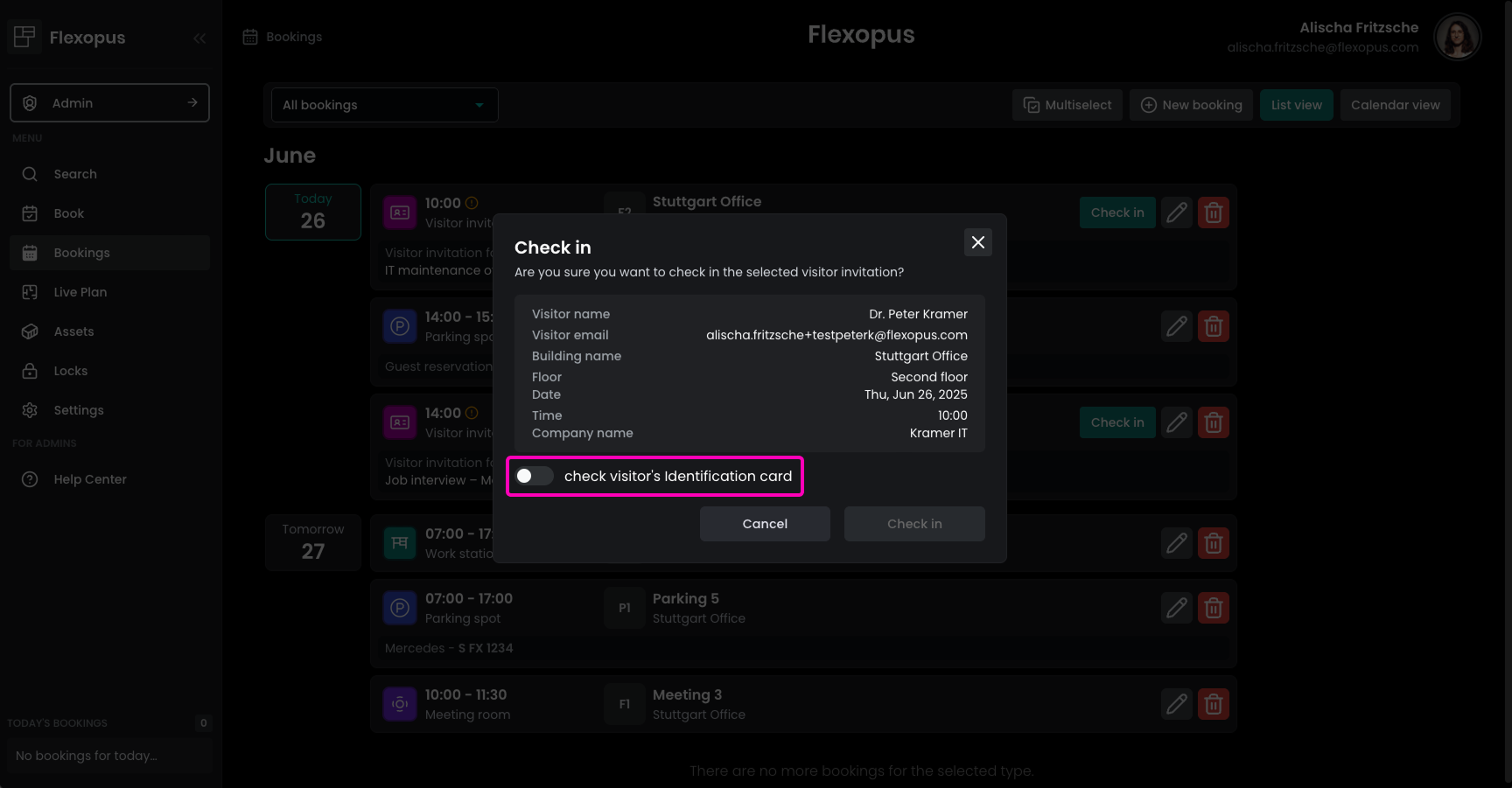
Added Cost Center Support for Asset Bookings
Asset bookings now support cost center selection. Once enabled via Settings → Asset Management in the admin area, users will be prompted to choose a cost center when booking an asset. The cost center options are sourced from the entries under Users → Cost Centers. If the user selects Default Cost Center, their personal default will automatically be applied to the booking.
The selected cost center is then linked to the asset booking and appears in both the admin area and the booking export, helping to streamline internal accounting.
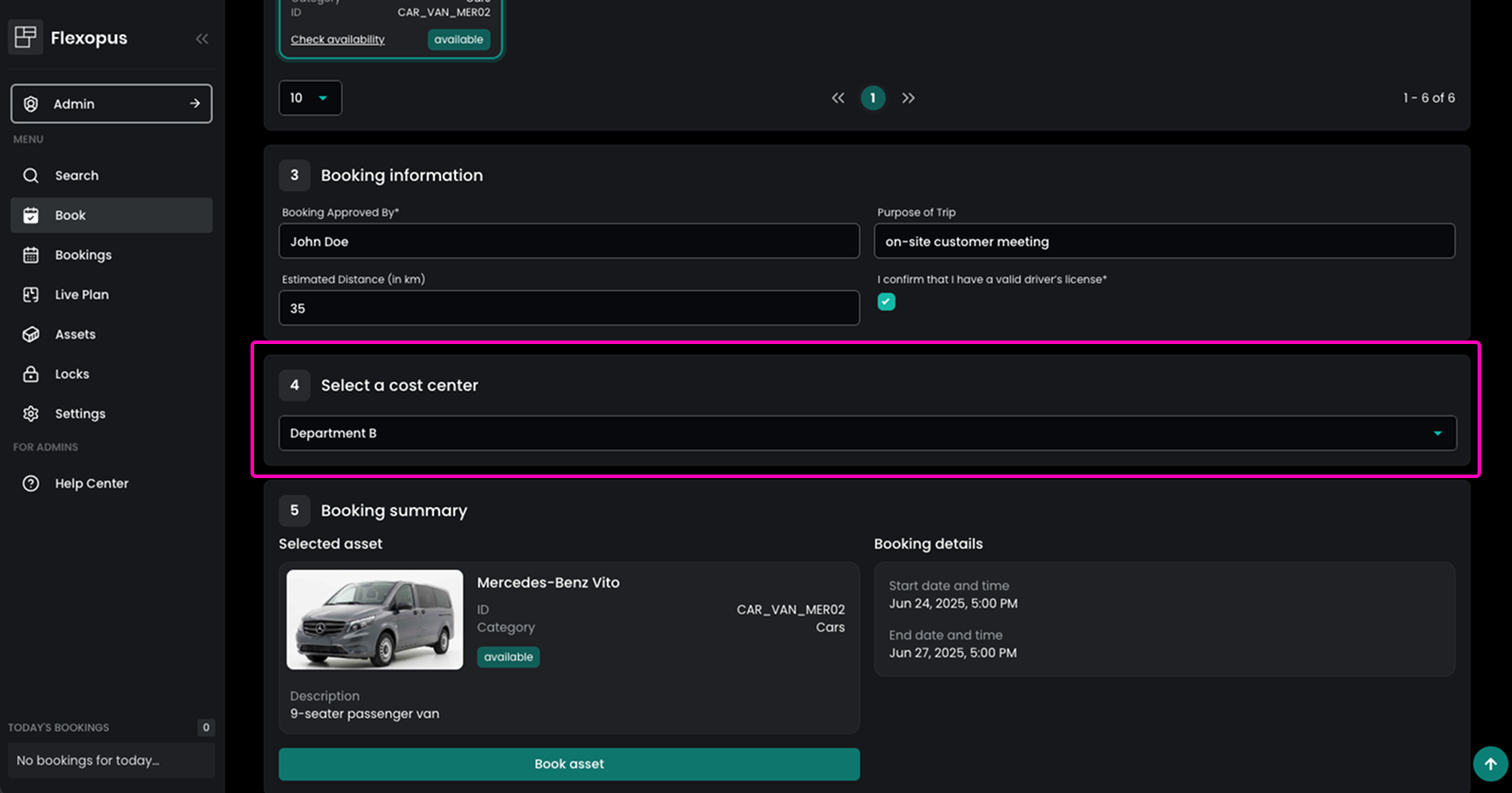
Added User-Side Cost Center Editing
A new setting in the admin area under Settings → Profile Settings called Cost center edit allows users to manage their own cost center directly. Once enabled, users can navigate to their personal Profile tab and update their assigned cost center without administrator intervention. This streamlines the maintenance of user cost center data and reduces administrative overhead, especially in organizations with frequent departmental changes.
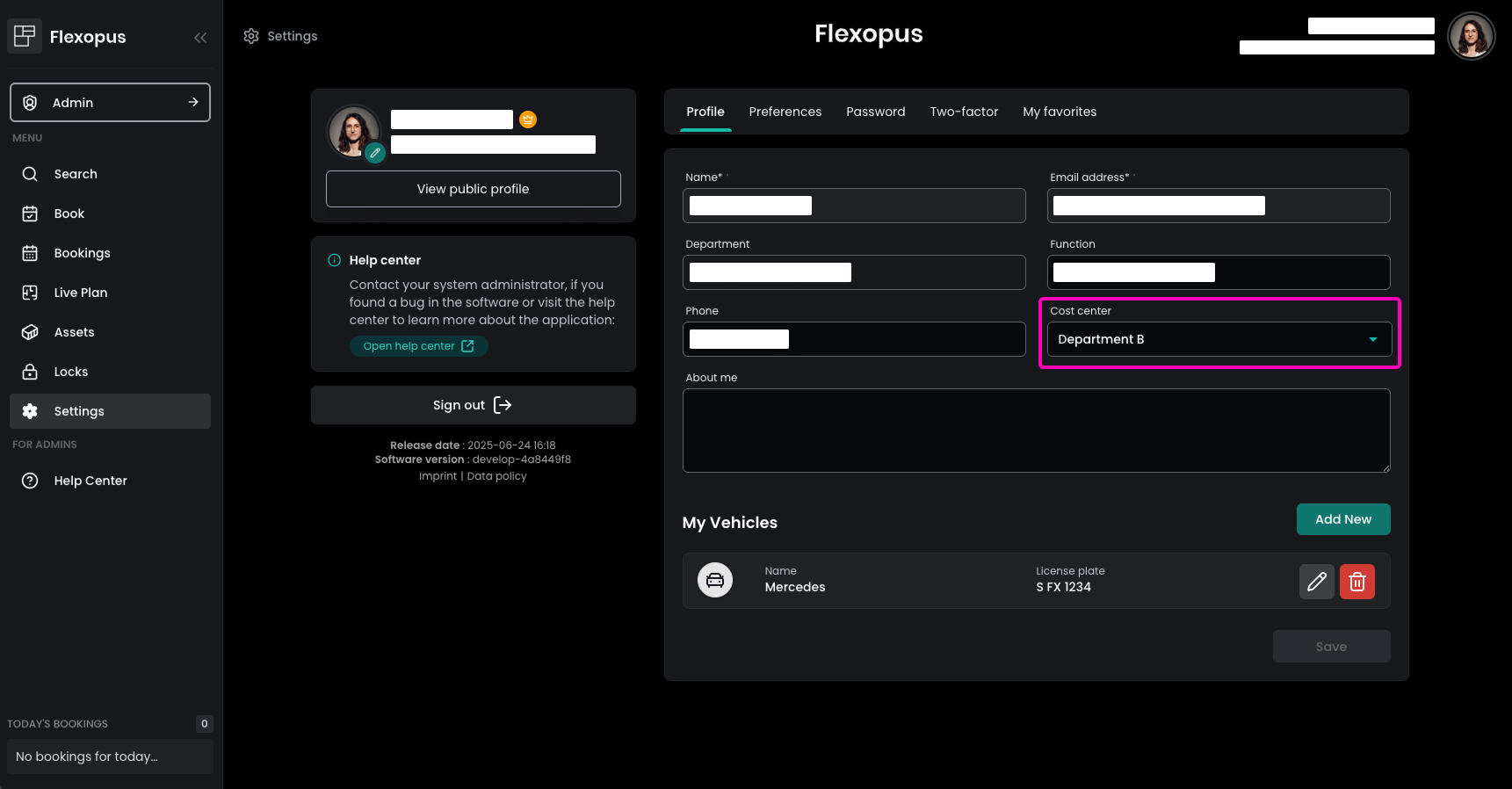
Improved Outlook Plugin Integration with Service Orders
The Outlook Add-In has been extended as part of the enhancement of the Catering Service Module. When a Flexopus-connected meeting room is added to an Outlook event, the plugin automatically syncs the event with Flexopus using the Microsoft Graph API.
Users can now view and modify the linked event within the plugin and add service orders for specific rooms. This enhancement bridges Outlook scheduling with Flexopus services for a more seamless event workflow.
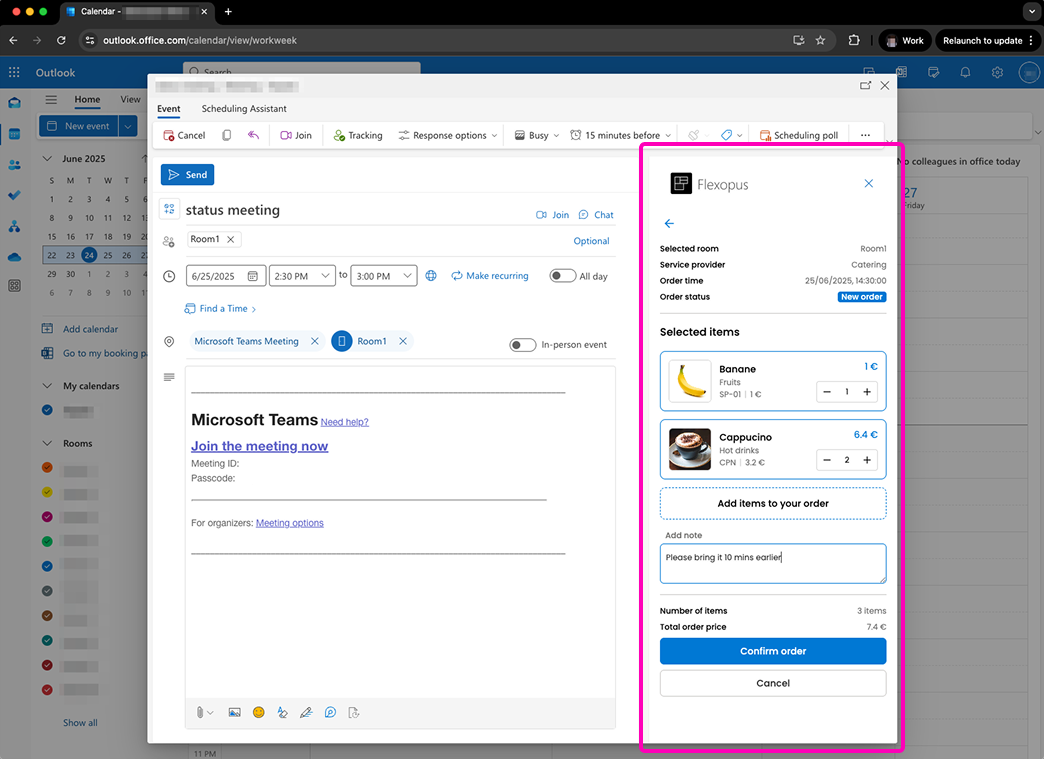
Admin Area
Added Internal Notes for Bookable Floor Plan Objects
When editing a floor plan in the admin area via Locations → Floor Plans administrators can now add internal notes to individual bookable objects. This new field, labeled Internal notes, is only visible within the admin area. It can be used to document relevant internal information such as approval history for fixed assignments, reasons for object blockings, or other object-specific notes.
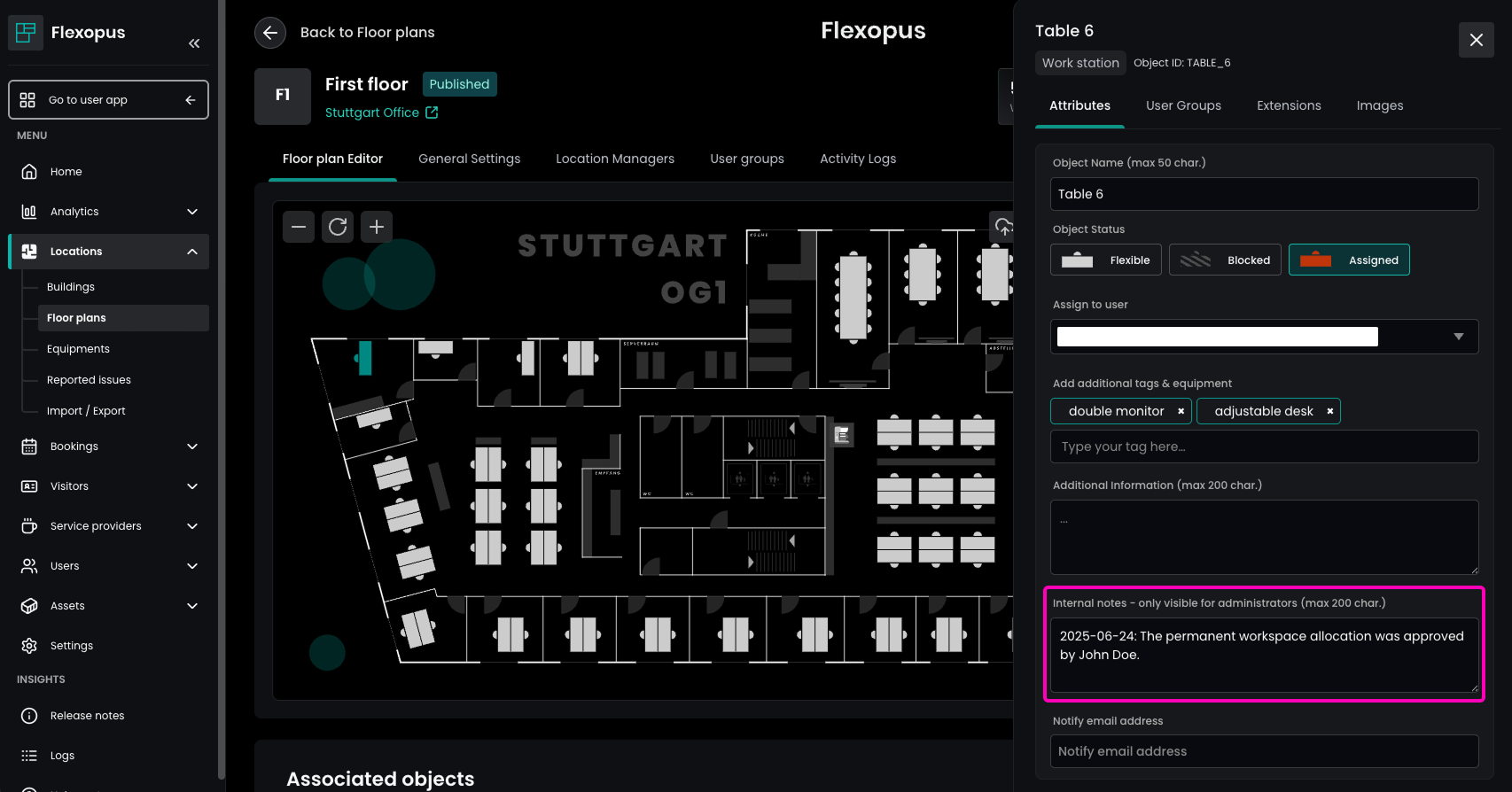
Added Visitor Management Toggle for Specific Buildings
With the latest update, administrators can now control which buildings use the Visitor Management module. Under Settings → Visitor Management → Visitor management buildings, visitor management can be disabled for buildings by removing them from the list. This is especially useful for locations that do not require a formal visitor check-in process within Flexopus.
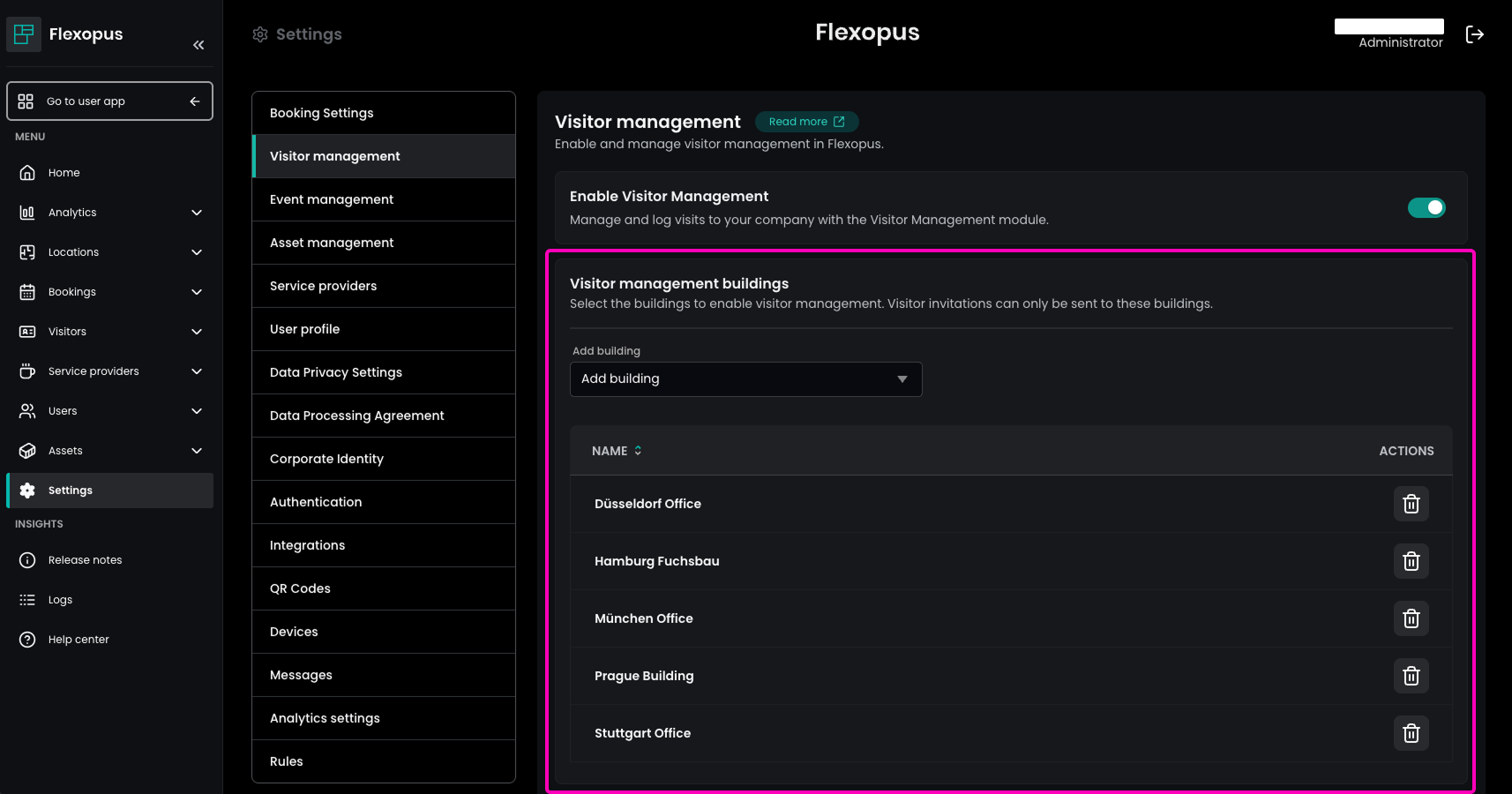
Added Global Booking Notifications per Asset Category
Administrators can now configure booking notifications at the asset category level. To set this up, navigate to Assets → Categories, select a category and switch to the General Settings tab. There, you can specify a notification email address that will receive alerts for all bookings, updates, and cancellations within that category. This helps ensure responsible teams are informed in real time and can prepare the requested assets accordingly.
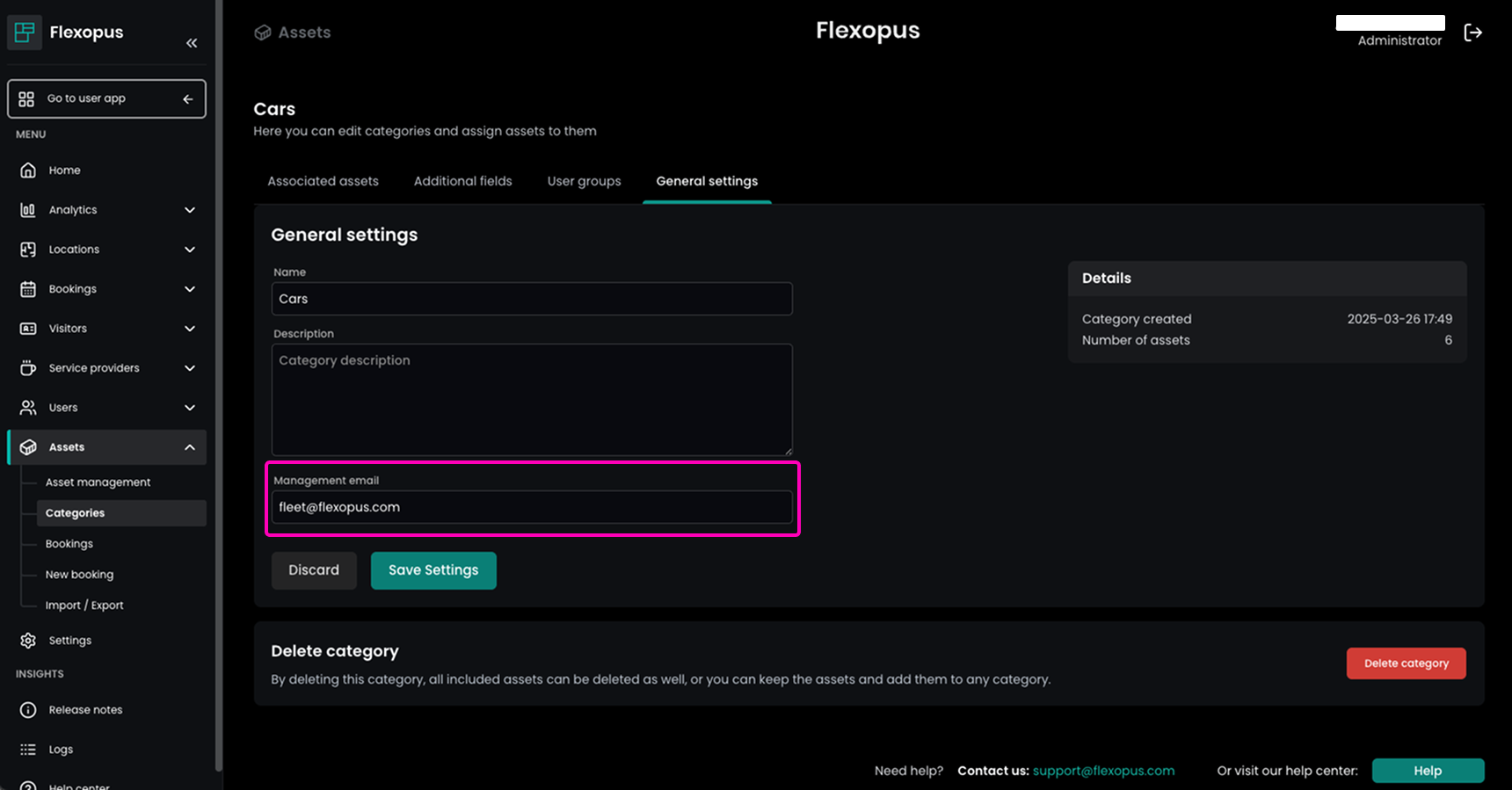
Added Trial Period and License Status for Devices
A trial period is now available, making it easier to test the Display Module and get an overview of trial and paid licenses. In the admin area under Settings → Devices, administrators can view the current status of all devices. If you're satisfied with the module during the trial phase, you can activate the device license directly after selecting the device. The relevant setting is called License Status and can be found at the bottom of the page.
All previously created displays have been assigned an active license status to ensure continuity.
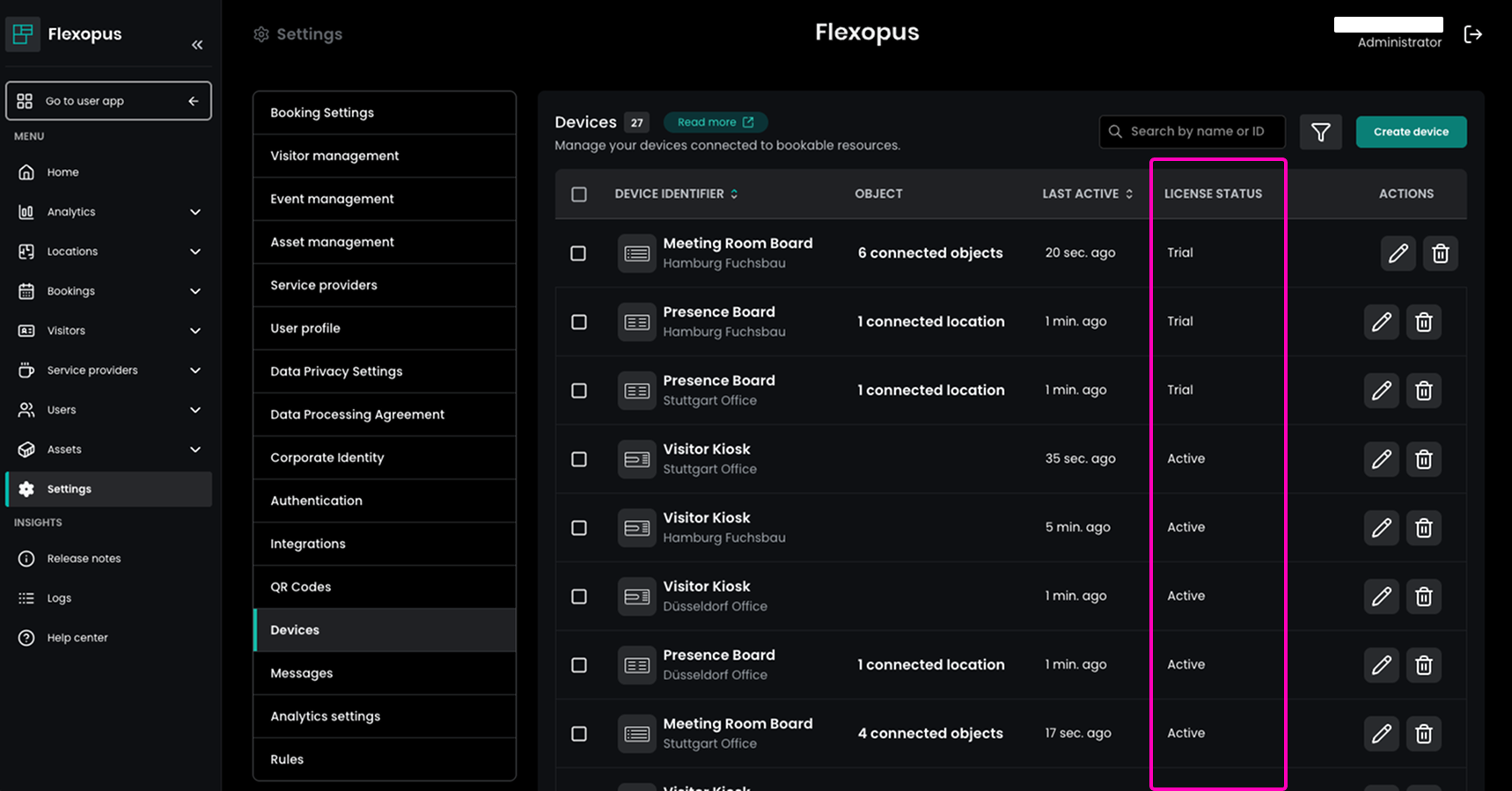
Added Daily Visitor Overview Summary
A new daily overview section has been added to Visitors → Visitor Invitationsin the admin area. It provides administrators with a quick snapshot of the current visitor situation, including the number of visitors on site, visitors who haven't arrived yet, and those who have already left — helping reception and facility teams stay on top of daily guest flows.
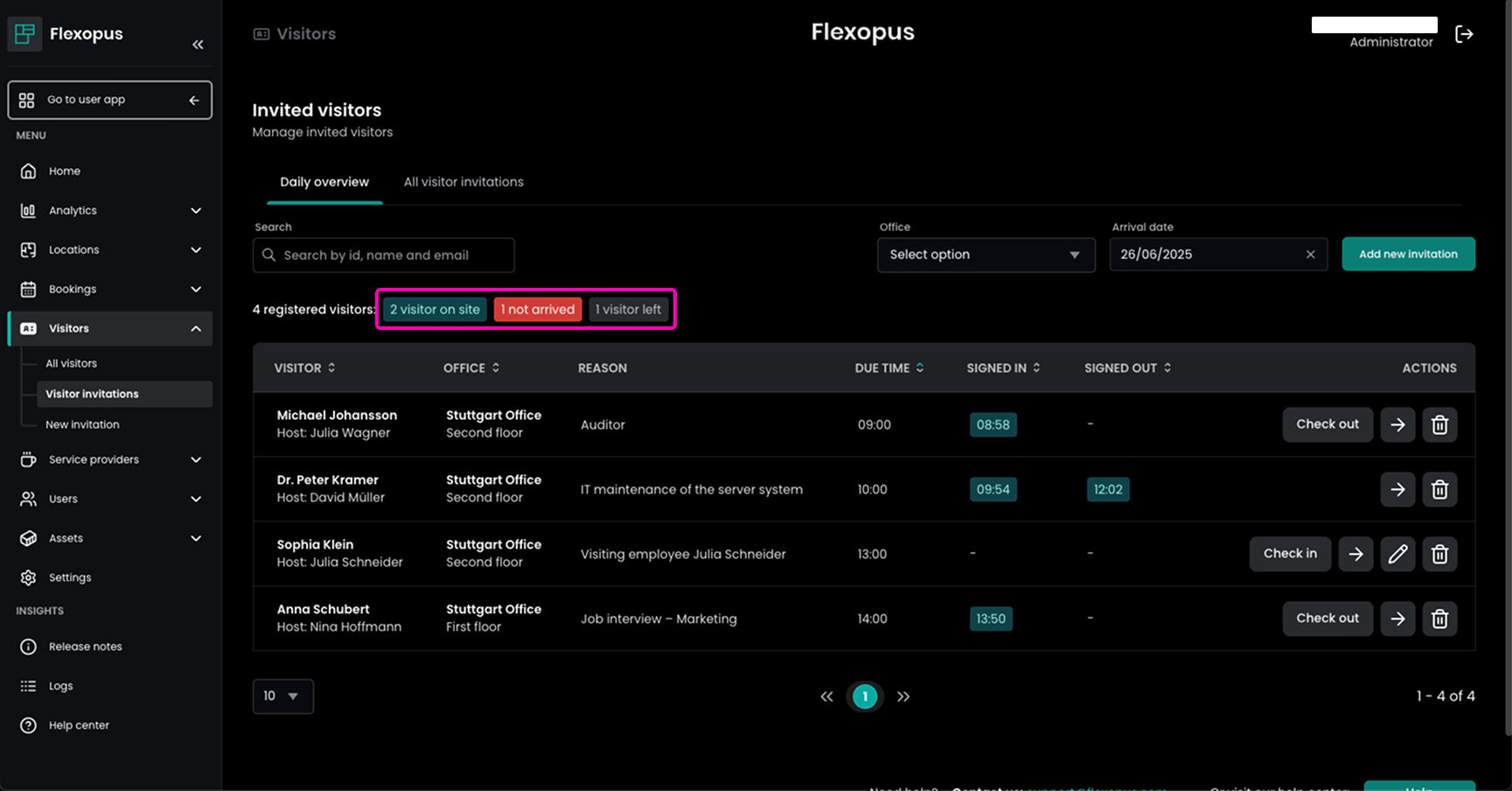
Added Current Year Filter in Building and User Statistics
In the admin area under Analytics → Building Statistics and Analytics → User Statistics, a new Current Year time frame is now available. This filter shows data from January 1st up to the current date, enabling more accurate year-to-date reporting and insights.
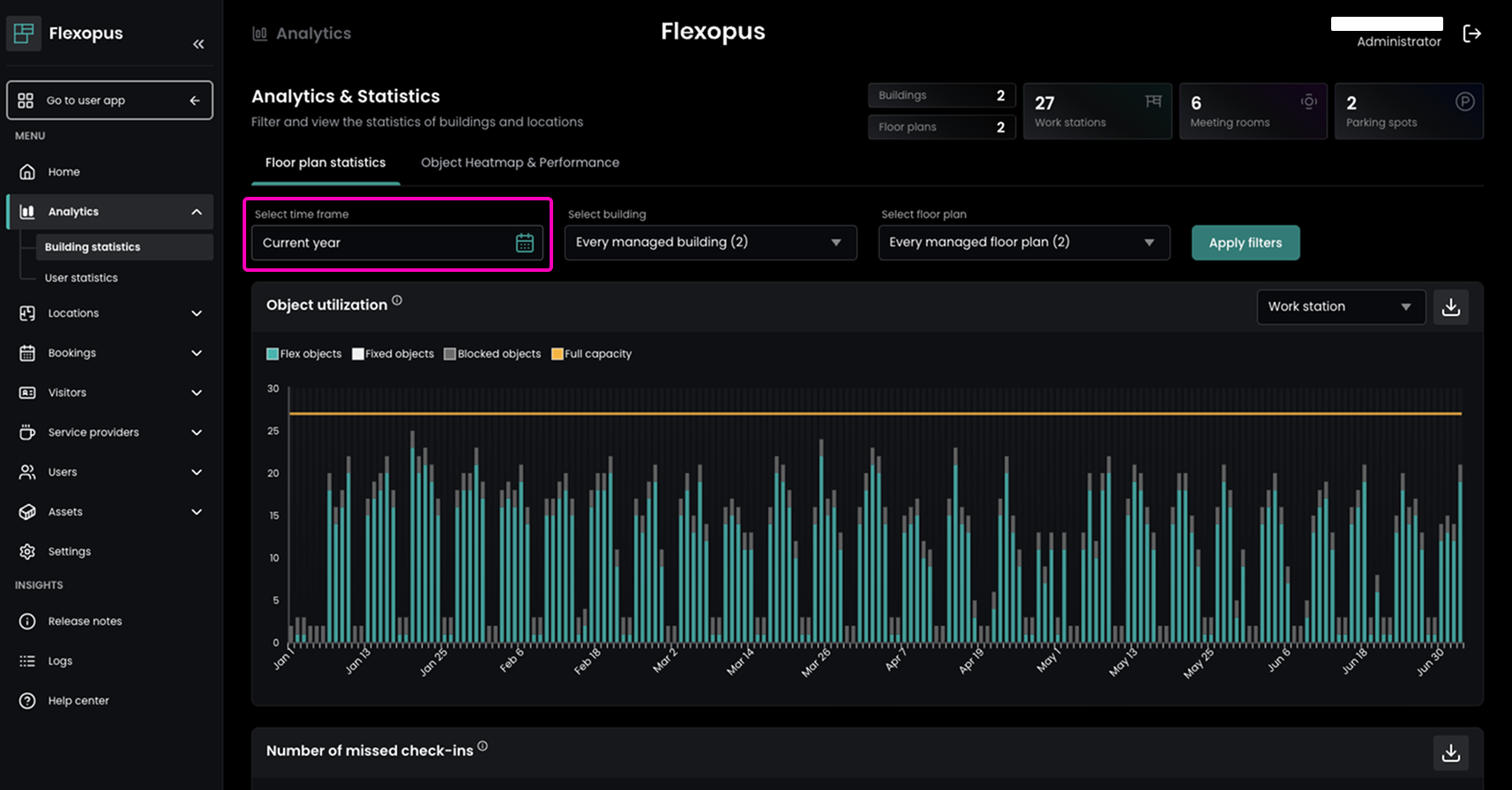
Added Microsoft Entra Attribute Support for SAML2
Flexopus now supports the synchronization of user profile pictures via SAML2 from Microsoft Entra ID. This enables automatic transfer of user images during login, enhancing profile consistency across the platform.
The setting can be found in the admin area under Settings → Authentication, after editing the SAML2 connection. Scroll to the bottom of the page to the section User attributes from Microsoft Entra to connect it.
To complete the setup, open https://portal.azure.com, navigate to Enterprise Applications, and search for the SAML2 entry used for Flexopus. Open it, then go to Security → Permissions in the left sidebar, and click the Grant admin consent button to allow access to user profile pictures.
The profile pictures are synchronized automatically the next time a user logs in.
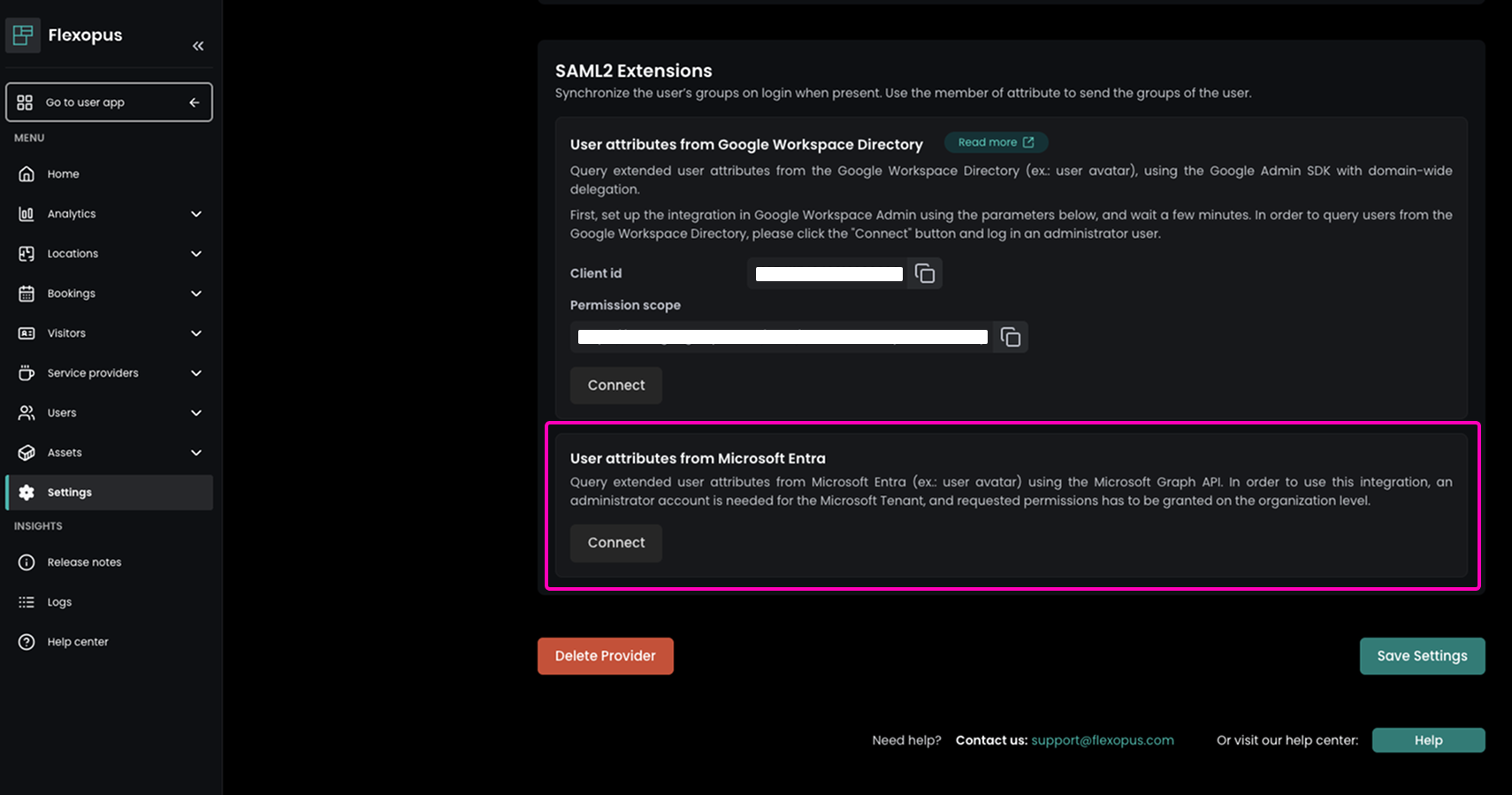
Added API Token Management with Permissions and Expiration
In the admin area under Settings → Integrations → Flexopus API, administrators can now create multiple API tokens. Each token can be assigned:
- A custom name for easier identification
- Granular permissions (e.g.,
read all,write user,write objects,write bookings) - An expiration date to limit long-term access
This update improves API security and manageability across external integrations.
